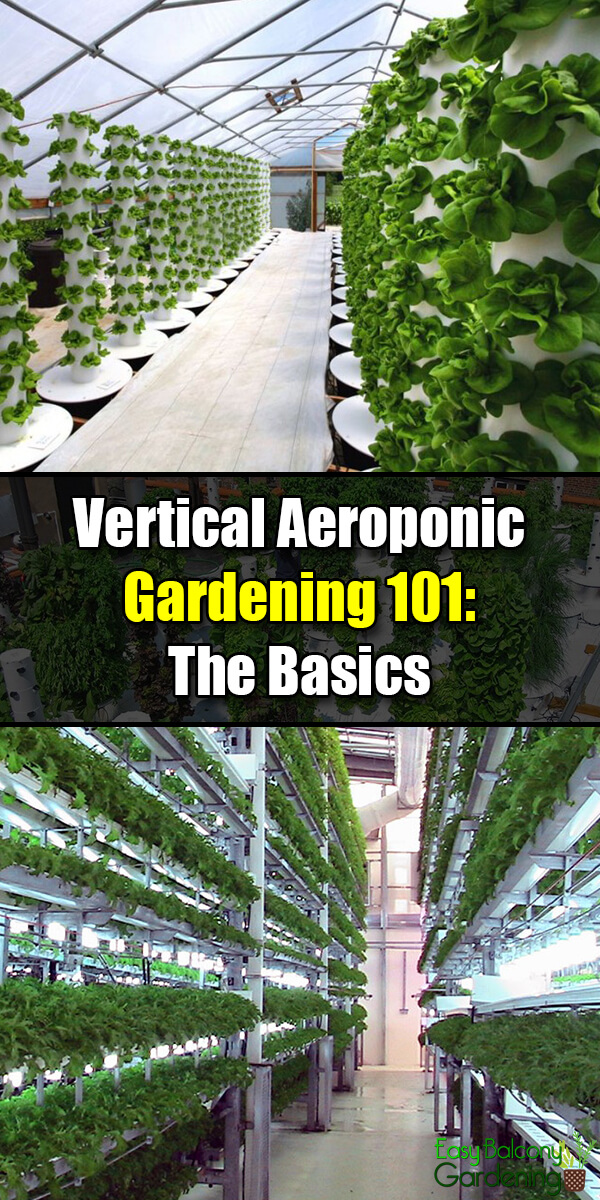Vertical aeroponic (air for “aero” and work for “ponic”) planting is basically a medium-less hydroponic system, but in a vertical fashion. It means growing plants all year round in vertical containers, in mid-air, without soil, utilizing very rich nutrient solutions for moisture.
In a Nutshell
The aeroponic planting method operates under a closed or semi-closed setting. The suspended position in vertical aeroponic planting makes it easier to keep the plant roots moist. Any excess moisture runs down the reservoir, ready for recirculation. The rich nutrients, the right amount of moisture, and carbon dioxide all work together to develop the plants to healthy maturity. The plants must be continually treated with a solution of 35% hydrogen peroxide to prevent disease, making it an ecologically friendly system. Aeroponics’ advanced tissue culture technology helps the plants become more productive yet disease resistant. If one plant is diseased, the sick plant can be easily removed from the plant support structure. The challenge is in keeping the plants hydrated in case of pump failure.
The Medium-less Wonder
Vertical aeroponic planting is very important to water conservation and space technology. The system makes it possible to provide plant life in areas without fertile lands and in outer space (where plants have been since the 1960s). NASA has vastly improved the reliability and performance of aeroponics. Imagine the astronauts on prolonged space missions being able to grow their food right in their own space! The equipment that can be used for aeroponics are foggers, sprayers, misters and other devices that deliver nutrients to the roots. More advanced equipment includes those developed by NASA. Vertical aeroponic planting also makes use of the high pressure devices to keep water droplets suspended up in the air.
No Need for What?!
The vertical aeroponic planting method requires neither frequent watering nor too much fertilizer. It does not rely on external weather conditions such as rain and sunshine. With aeroponics, the majority of growers depend on fluorescent growth lights, in lieu of the sun, to allow the plants to convert light into energy. NASA places the aeroponic planting system at 98% less water usage and 60% less fertilizer treatment. Moisture loss is minimal even during summer or hot months.
Other Advantages of Vertical Aeroponic Planting
First of all, you can transplant sooner with the vertical aeroponic system than when growing plants the traditional way. For example, you need to wait about 30 days to transplant tomatoes after starting them in pots. With the aeroponic method, this waiting time is reduced to within ten days. Second, the system conserves land. It uses a three-dimensional pyramid that produces great harvest and keeps the pest away at the same time. Third, the growing techniques are quite simple. Fourth, vertical aeroponic planting is more cost effective, punctuating the added major advantage of healthier plants and more bountiful harvest.
Aeroponics vs. Conventional Hydroponics
Although aeroponics is a type of hydroponics, the former has advantages over the latter. Some of these benefits have to do with the aeroponic plants not requiring a medium. Plants that are aeroponically grown enjoy sufficient aeration. In regular hydroponics, you need to worry about oxygenation processes. There is a frequent need to replace either the nutrient mixes or the air compressors to keep the plants aerated. You can likewise more than likely expect the plants to experience transplant shock or stunted growth. This problem is non-existent with aeroponics planting.








Other than vegetables what else grows best in this vertical aeroponic gardening? And is there a starter kit for beginners like me, and if there is where can I search for, thank you very much.